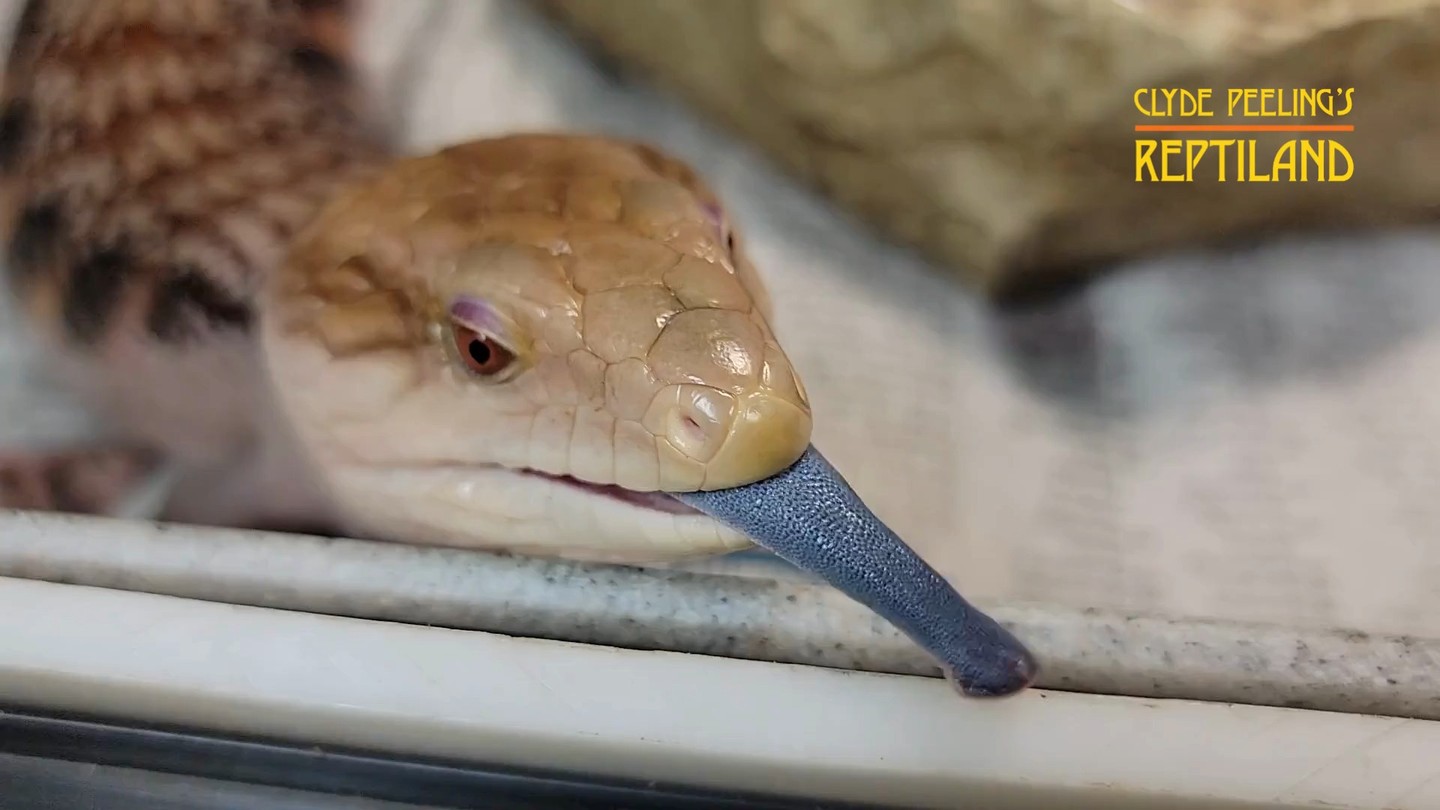Blue-tongued skinks are named for the prominent blue coloration of their tongue. But what makes them blue? It’s fascinating to discover that less than 1% of the animal kingdom is thought to have any true blue pigment. One of the only vertebrates that contains blue pigment is the blue poison dart frog, known as Dendrobates tinctorius azureus. So, how do blue-tongued skinks achieve their vibrant blue tongues? Let’s delve into the intriguing details!
In most animals, blue coloration is achieved through structures that change the wavelength of light. However, in the case of blue-tongued skinks, their tongues reflect UV-blue light. This means that while their tongues may appear blue to our eyes, they emit ultraviolet light perceived as blue by most other animals. It’s as if these skinks have a hidden superpower of glowing blue tongues!
This phenomenon is even more interesting because the back of a blue-tongued skink’s tongue reflects more light than the tip. This difference in reflectivity creates a stronger blue effect, so you might often see them open their mouths wide to display as much of their tongue as possible. This defensive display is believed to intimidate predators, warning them that the skink will not be messed with!
These unique adaptations have likely evolved as a form of self-defense. By showcasing their striking blue tongues, blue-tongued skinks may be sending a message to potential predators that they are armed with something potentially dangerous. After all, bright colors in nature often serve as a warning sign, indicating the presence of toxins or venom.
Aside from their remarkable tongue color, blue-tongued skinks possess various other fascinating characteristics. Here are some intriguing facts about these amazing creatures:
1. Blue-tongued skinks belong to the Tiliqua genus, which consists of several species native to Australia and Indonesia. They are primarily terrestrial reptiles, meaning they spend significant time on land.
2. These skinks are known for their large, robust bodies, reaching lengths up to 24 inches (60 cm). Their bodies are covered in smooth scales, and their tails are short and stout.
3. As their name suggests, blue-tongued skinks have distinctive tongues ranging from bright blue to deep purple. While the purpose of this vibrant tongue is still debated, it is believed to serve as a visual deterrent to predators.
4. Besides their captivating tongues, blue-tongued skinks have another defense mechanism up their sleeve – their tail. When threatened, they can flatten their bodies, raise their tails, and hiss loudly to ward off potential attackers.
5. Blue-tongued skinks are omnivorous, meaning they have a varied diet, including plant matter and small invertebrates. They are opportunistic feeders, consuming whatever food is readily available in their environment.
6. These skinks are well-known for their ability to adapt to diverse habitats, ranging from woodlands and grasslands to suburban gardens. They are adaptable creatures and can even be found in urban areas.
7. Blue-tongued skinks are viviparous, meaning they give birth to live young instead of laying eggs. Females can produce several offspring in a single reproductive cycle, and the newborn skinks are fully developed and ready to explore their surroundings.
8. Interaction with humans has led blue-tongued skinks to become popular pets. Their docile nature and interesting appearance have made them sought-after reptiles in the pet trade. However, it is important to ensure captive blue-tongued skinks have proper care and appropriate enclosures to ensure their well-being.
The world of blue-tongued skinks is truly captivating. From their mesmerizing blue tongues to their unique adaptations and behavior, these reptiles offer a glimpse into the remarkable diversity of nature. Whether you encounter them in the wild or as pets, observing these fascinating creatures can ignite a sense of wonder and appreciation for the beauty of the animal kingdom.
So, the next time you see a blue-tongued skink, take a moment to admire its vibrant tongue and marvel at the fascinating biology that makes it possible. Remember, there’s always more than meets the eye in the natural world; every creature has its own story.
*****
Source Description
Blue-tongued skinks are named for the prominent blue coloration of their tongue. But what makes them blue? Less than 1% of the animal kingdom is thought to have any true blue pigment. One of the only vertebrates that contains blue pigment is the blue poison dart frog (Dendrobates tinctorius azureus).
In other animals, blue coloration is achieved by structures that change the wavelength of light. A blue-tongued skink’s tongue reflects UV-blue light, so our eye, and most other animal, perceive it as blue. Interestingly, the back of the tongue reflects more light than the tip, strengthening the effect, hence the defensive display of opening the mouth wide and showing as much of the tongue as possible when faced with a predator.
.
.
.


